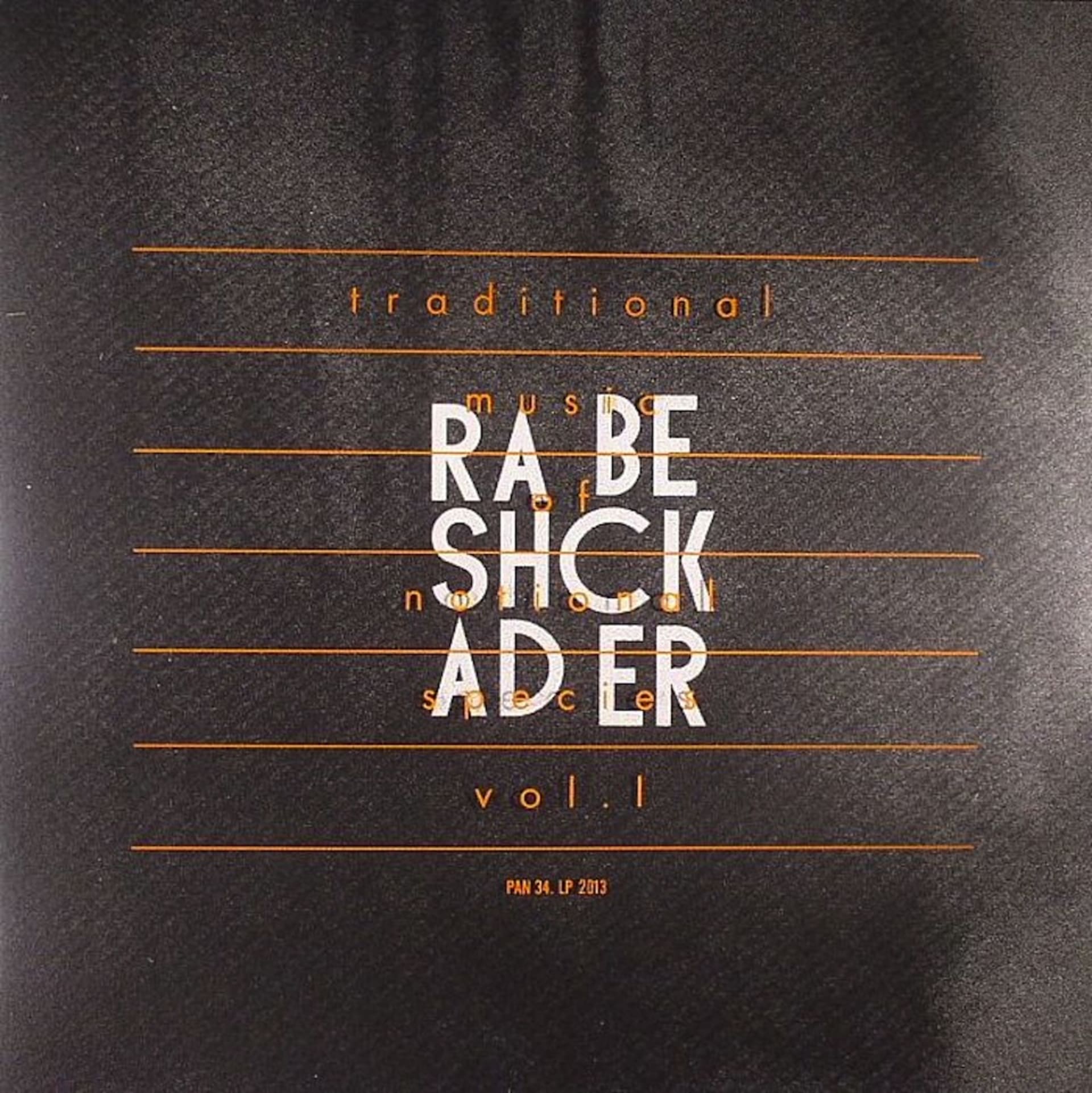
André Vida recommends Rashad Becker’s Traditional Music of Notional Species Vol. 1
André Vida is co- founder of the NYC collective Creative Trans-Informational Alliance and a frequent collaborator with musicians and artists as diverse as Oni Ayhun, Anthony Braxton and Tino Sehgal. In our forthcoming Fall 2013 issue he talks about Rashad Becker’s latest release on PAN.
Rashad Becker’s Traditional Music of Notional Species Vol. 1 is a collection of themes and dances documenting the formats of a hypothetical culture. Their musical materials betray the approximate gestures of a mouth but remain ambiguously balanced between indecipherable lyrical narratives and morphing instrumental bodies. Sounds of voices hint at language, but the undermining entropy of the arrangements, their dissolve and decay, indicate this might also be a form of camouflage that allows this mysterious species to fulfill its rituals under the radar of human listeners.
In Becker’s earlier works such as “Many Critical Minded Officers Suffer From Their Jobs and Hence Breed a Likeable Melancholia”, a narrative progression can be heard in the vein of a foley table used for sound effects. In contrast, these pieces hang in their own internal moodiness, lashing out from time to time. Themes I and II have cyclical progressions, filled with taunting, smarmy, wallowing, and erotic cadences, which come into focus with the kind of comical timing of a Laurel and Hardy routine. Themes III and IV teeter more on a musical edge, playing with the language of solos, dislocations and accompaniment. Here begins a move into more densely populated sonic environments where the society of this species expands beyond conversation into something ritual. And with ritual, questions begin to emerge: Are they generating these sounds by rubbing against themselves? Are tools involved? How strong is the vocoded tradition in this culture anyways?
Some ethnomusicologists theorize that the variations of human folk verses that survive time are those that most comfortably fit the vocal range and languages of their singers. Becker’s themes share that sense of ease with the instruments of their transmission. This is perhaps what I find so misleading about the role of voices in this recording. They warp and snuggle up against one another, creating fields of activity that swoop in and out of focus. A process of natural selection recurs within every new generation. Becker’s mouths sometimes puke back, murmuring codes and displaying uncanny features, only to then disappear into a muted cudgel of feedback. The limp, repetitive, hungover intro to “Dances I” opens up a lyrical, folksy sounding narrative. The presence of Eastern European gestures of ornamentation hint at a village context and forms of local inebriation.
“Dances II” is a far more aggressive and taunting affair, progressing with the abrupt and repetitive belligerence of a mating ritual. The sequences are driven by such a complex sound palette that the repetitive fiction dissolves. As much as I want to understand the poetic implications of these Dances/Chants, I find myself unable to wrap my head around the meaning of it. Is the distinction designed to open a parallactic angle in on the phenomenon of tradition and its idiosyncratic codes? Or is this sound world too distracting to think in words? I find myself looking for traditional human music to compare. Listening to Ugandan court music, I’ve become hyper aware of the implications of collective telepathy and trance via the human body. In relation to Becker’s society, the sounds gnaw at me with their distorting shapes. They thrive in a dislocated sense of physicality and expectation, and for me that feeling sheds its inverted shadows back onto the royal court. The invitation to backwards engineer the traditions of this notional species from the gestures and moods of these sounds is provocation enough for me to recommend this to anyone interested in expanding their sense of creative listening. ~
Rashad Becker’s Traditional Music of Notional Species Vol. 1 is out now on PAN. This text first appeared first in Electronic Beats Magazine N° 35 (3, 2013). Read the full issue on issuu.com or in the embed below. André Vida’s new exhibition/interactive musical installation Score and Seek is open in New York from September 19-30.
Published September 11, 2013. Words by Andre Vida.
